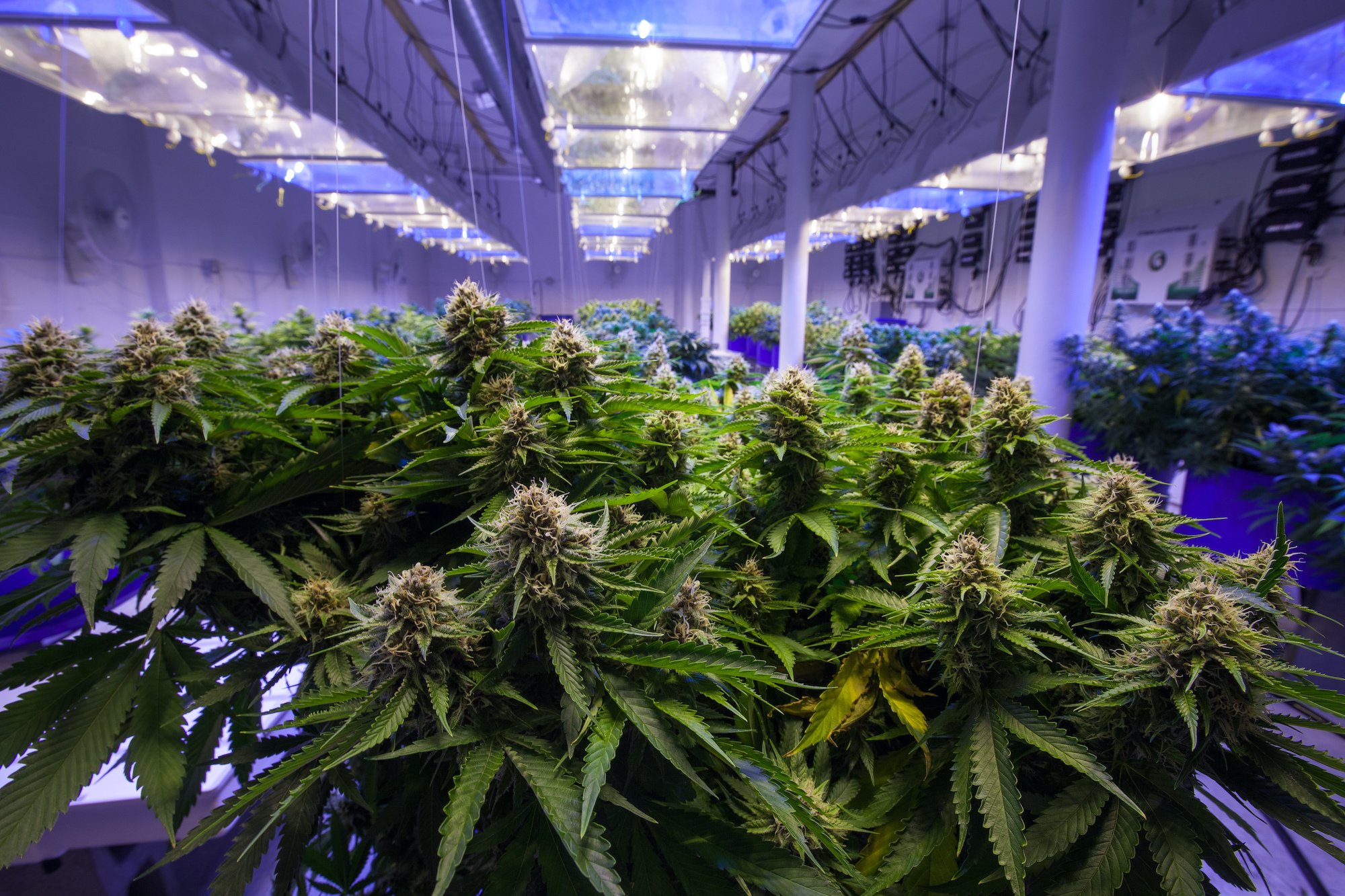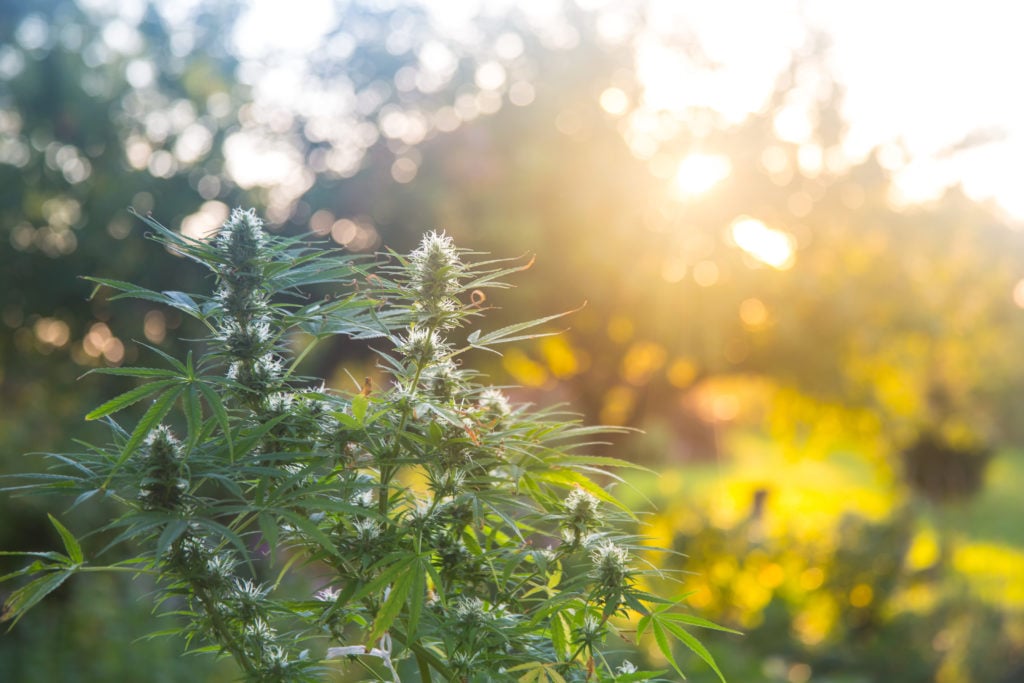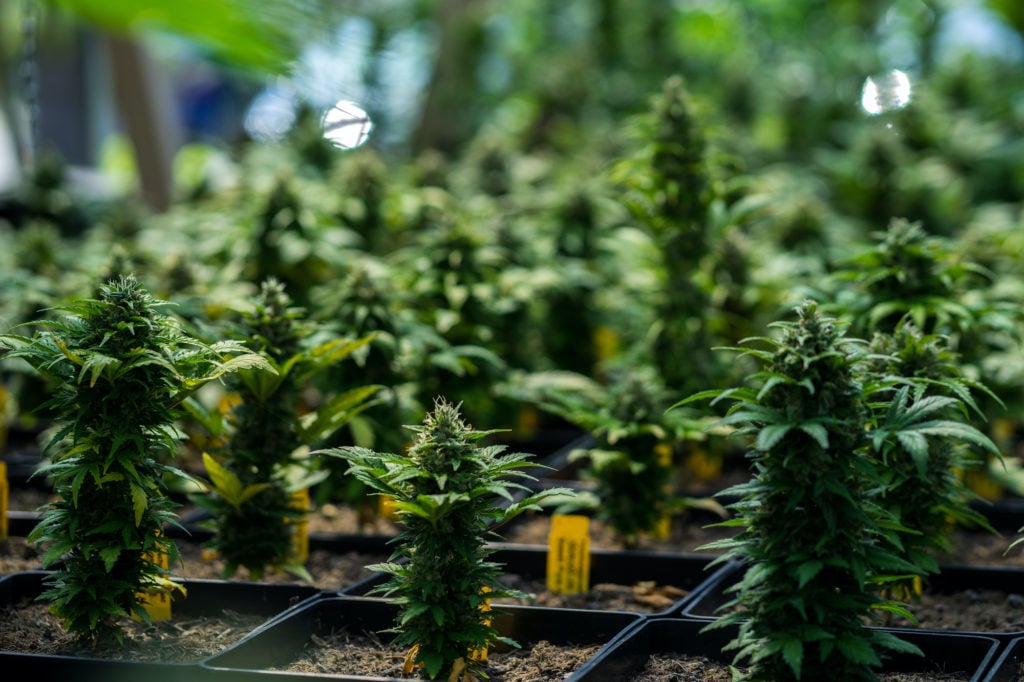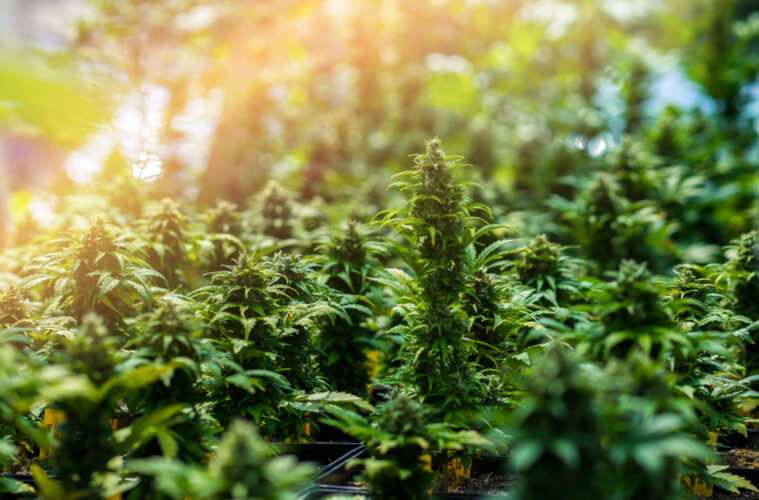It used to be that the most common question asked about a hemp plant was whether it was cannabis indica or cannabis sativa. Recently, hemp lovers have adopted a more immediate concern.
If you’ve been paying attention to the world of CBD Hemp flower since the 2018 farm bill, you may have noticed three terms come into popular use. These terms are used to quickly categorize the quality of hemp plants: indoor flower, outdoor flower (or ‘sungrown’ hemp) and greenhouse grown flower.
At the top of this qualitative pyramid is indoor flower. Indoor hemp flower has quickly become a synonym for any ultra-premium, top-of-the-line CBD hemp flower. When a customer is asking for a hemp cultivator’s ‘indoor strains’, this is roughly akin to asking a whiskey distiller for their ‘small batch, private reserve’ bottles. In other words, you’re asking for the ‘high shelf booze.’
More often than not indoor hemp flower strains possess what CBD connoisseurs refer to as bag appeal: hemp flower that has ‘got the goods’ when it comes to aroma, appearance, and trim.
But is there any truth to this reputation and distinction between outdoor cannabis, indoor cannabis, and greenhouse grown cannabis strains? How did indoor flower achieve this reputation for excellence? And did it do so fair and square? Is any and all indoor flower worthy of this claim to being a superior cannabis plant?
In this blog post we will investigate the differences in these styles of cultivation and learn what has led to indoor hemp cultivation becoming the preferred growing methodology for hemp flower connoisseurs. Let’s start by defining our terms.

What is Indoor-Grown Hemp Flower?
As the name implies, indoor hemp flower refers to cannabis that has been grown indoors. What is less intuitive is how growing hemp indoors leads to a more high quality plant than outdoor grown hemp. Wouldn’t being outdoors lead to more sun, rain, room to grow, and therefore a more fertile crop?
It’s not the fact that the plant is kept indoors that leads to a more high level product than you get from outdoor plants. Rather, it’s the complete control that the cultivator gains over their plants’ environment. Indoor plants are often pampered with optimized ventilation, a monitored atmosphere, artificial light cycles through grow lights, and carefully measured nutrient supplements. An indoor grower can manipulate and make micro-adjustments to practically every aspect of a plant’s growing condition.
Because indoor hemp plants have their environment adapting to them, they don’t have to spend any energy adapting to their environment.
In the proper hand of an experienced, attentive grower, indoor plants yield denser buds with greater resin. This provides indoor plants with a healthier look, a stronger aroma, and great potency through cannabinoid content.
Indoor flower is always more expensive for the end user, but this is simply because it’s more expensive for the hemp producer as well. The amount of power, water, and fertilizer used to cultivate indoor strains is considerable and cost-prohibitive for many hemp producers. And that’s not even factoring the cost of equipment, or the amount of time and labor that goes into monitoring the indoor environment.

What is Outdoor Hemp Flower?
Outdoor flower refers to hemp flower which is grown outdoors in nature, just like most agricultural crops.
OK, Maybe that doesn’t come as too great a shock. But ‘outdoor flower’ is a much broader term than indoor flower. While learning that a plant was an indoor grow tells you a lot about the level of care and resources that went into that plant, hearing that a plant was sun grown doesn’t give you nearly as much information.
The only thing we know when we learn that a hemp flower was sun-grown, is that it was planted outside. Sungrown hemp flower may have been grown in a part of the world which is perpetually overcast, or it may have been grown where there is hardly any precipitation. It could have been grown in the United States, or Central Asia, or the Middle East. It may have been grown by a total newbie, or it may have been grown by Shen Nung, The Divine Farmer himself!
While a skilled hemp grower can control some elements of an outdoor plants environment (feeding the plants routine nutrients, for example) other factors are simply out of anyone’s control, and can vary greatly season-to-season.
Because outdoor hemp plants spend a considerable amount of their energy adapting to their environment, their buds may be less dense than their indoor cousins, as well as of a darker color.
So far this blog post may be giving people the impression that cannabis plants are an incredibly frail and sensitive crop. This is far from the truth. While adaptiveness can vary greatly between strains, most hemp flower is incredibly hearty.
In the right, skilled hands, outdoor hemp flower can provide amazing yields and produce CBD-rich buds that can go toe-to-toe with Indoor strains in terms of aroma, aesthetics, and cannabinoid content. Many of Berkshire CBD’s sun grown strains are regularly mistaken for indoor strains, and have won out in blind taste tests over hemp flower that was cultivated indoors.
While density and aroma are typically the most impacted aspects of outdoor flower (outdoor flower will have more earth notes to it) CBD potency is the least impacted. Outdoor flower can still have a perfectly comparable concentration of cannabinoids as indoor strains.
Moreover, sungrown hemp flower will always remain more abundant than indoor hemp flower. It’s a rare cultivator indeed who can claim the majority of their hemp products as indoor flower. The level of expense and resources required to produce indoor flower strains is simply prohibitive for many cannabis growers.

What is Greenhouse-Grown Hemp Flower?
Greenhouse grown is the often neglected, middle sibling of hemp flower cultivation. Neither fully indoor nor fully outdoor, greenhouse hemp plants receive exposure to the sun while granting the grower a more controlled environment than sun grown cannabis plants receive.
Being a compromise between indoor and outdoor is both greenhouse-grown hemp flower’s blessing as well as it’s curse. Greenhouse hemp flower typically has denser buds than most outdoor flower, while requiring less expense and fewer resources to cultivate than indoor flower.
But, the fact of the matter is that the market simply often lacks the patience for this ‘middle option.’ People either want to splurge on the cost of luxury indoor flower or remain economical in purchasing outdoor flower. Greenhouse grown hemp flower is typically priced somewhere in the middle. This makes consumers feel as though they’ve neither treated themselves to a high-end product, nor made the shrewd decision in terms of cost.
A Brief History of Indoor Hemp Flower Cultivation
For thousands of years, cannabis seeds were planted outside just like every other crop. The legendary Chinese emperor Shen Nung is attributed as the first human being who began cultivating cannabis, around 2,800 BCE.
You might think that the 2018 Farm Bill and the federal legalization of hemp is what allowed growers to begin experimenting with indoor crops.
On the contrary, it was hemp prohibition, not hemp legalization, that initially drove growers indoors. In the Reagan era 80s, the war on drugs was at its most heavy-handed and oppressive when it came to cannabis.

Raids and air surveillance forced growers to improvise and adapt to indoor growing conditions. Ironically, the drug war is what gave birth to grow lights, advanced soil nutrients, and numerous technological innovations when it came to cannabis cultivation. If it hadn’t been for Ronald Reagan, the world may have never discovered how adaptive cannabis was to being grown indoors!
In addition to the technological innovations that indoor hemp cultivation has facilitated, it has also made possible year-round cultivation, tighter control over breeding conditions, and greater ease in product standardization.
The greatest irony about the drug war giving rise to indoor cultivation is that indoor is now often the necessary methodology to produce legal, medically approved cannabis. Producing a cannabis crop that consistently meets regulatory standards requires tighter control over growing conditions. Often indoor hemp flower cultivation is the only thing that can provide this level of standardized consistency.
Nowadays, certain states have laws which dictate that all cannabis grown for dispensary use must be indoor grown. Hawaii, despite having the ideal soil for sungrown hemp, requires cannabis to be grown indoors. California officials have the authority to require cannabis crops only be cultivated inside as well.
While indoor growth operations started out as the ‘speakeasies’ of the cannabis world, they can now be found to be walking hand-in-hand with state and federal legislators.
Is Indoor Hemp Flower Better?
It’s unlikely that indoor flower’s reputation as the highest quality hemp flower on the market will change any time soon. And to a great extent, indoor has earned this reputation fair and square. Retailers want the freshest hemp flower with the highest terpenes, densest buds, and greatest bag appeal. It’s usually a fair assumption that indoor flower will provide denser buds and a more pungent aroma – assuming that they have found a legendary hemp cultivator.

Despite the demand for indoor flower and its stellar reputation, it is likely to remain a ’boutique’ production. Again an analogy to whiskey seems appropriate. A lot of patience, time, and energy goes into the making of a 25 year, aged, single malt scotch. The time, energy, and resources required for indoor flower means it will always be more difficult to come by than sun-grown and greenhouse grown hemp flower.
Yet let’s not be so quick to dismiss sun-grown and greenhouse grown hemp flower. While indoor may more often than not beat them both in terms of aroma and bud density, the potency of outdoor cannabis has been tested time and again and can be just as strong as indoor flower.
At the end of the day, it’s not a question of indoor hemp flower VS outdoor hemp flower, but a question of the skill and dedication of the growers themselves. There are outdoor hemp flower strains that can outperform indoor strains in all categories of concern, and vice versa.
While indoor strains will win out more often than not, hemp flower enthusiasts should be just as curious and open to trying outdoor strains as they would indoor.
Just like young wines have beaten old wines in blind taste tests, there are outdoor strains that have beaten indoor strains in competitions for aroma, bud density, and potency. This was just as true for traditional cannabis. There is no reason to limit yourself and your experience when it comes to smokable hemp flower
The Bottom Line: The hemp flower market is a ‘brave new world’, with exciting new strains, flavor profiles, and effects waiting to be discovered, regardless of a plant’s method of cultivation. Demand quality, strain variety, and high compliance standards from your hemp flower provider, and enjoy each new discovery!
This post is sponsored by Berkshire CBD.


